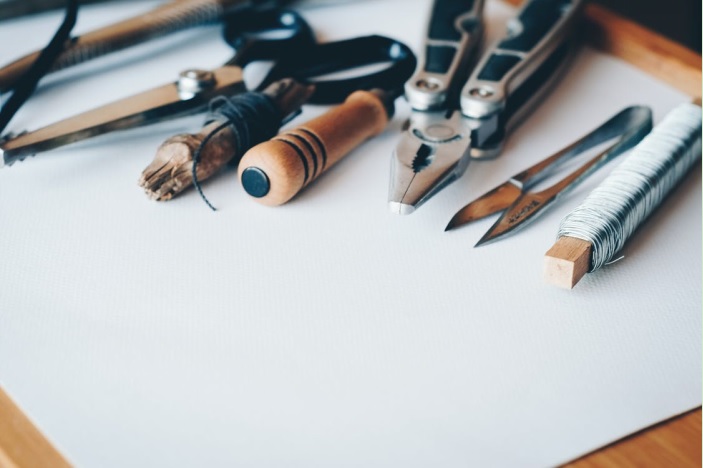
Remodeling your home is out of the question when you’re on a tight budget, or is it? With access to limitless information and ideas, you can easily make up for the low budget with some creativity. DIY ideas are known for doing just that. However, even do-it-yourself ideas have their share of dos and don’ts. You cannot risk your money and time, or even your safety. Thus, here is a list of DIY remodeling tips.
Do Know Your Limits
When doing DIY remodeling projects, it is essential to know your limits. Although it may be the least of your worries, setting the appropriate budget will save you from unwanted stress. It is also vital to keep in mind that unexpected expenses are likely to occur. More importantly, don’t hesitate to ask your friends and family for help where needed.
Knowing your limits is very crucial; not having the right skillset can do more harm than good. Moreover, identifying your limits will help develop an understanding of the tasks you can do and where you may require professional assistance.
Do: Practice Caution
The projects seen on TV or social media are often not as simple as they seem. Each project comes with a plethora of safety hazards. From seemingly harmless activities like repainting to more skilled projects, taking the right precautions is necessary.
DIY projects must never be tackled without access to a first-aid kit and other safety gear. A safety-wear kit commonly includes a pair of gloves, safety boots, and also a pair of safety goggles. However, the average safety goggles may seem rather aesthetically monotonous to most. Therefore, getting a pair of classic safety glasses — a blend of both fashion and function is an ideal pair of glasses for anyone.
Do: Use the Right Equipment
When thinking of DIY, the first thought that comes to almost every owner’s mind is to pull out the power tools they have stored. Power tools are a significant safety hazard. They require to be adequately maintained and used with skill and precision. If the wires are damaged, first try patching-up the wires before using the tool.
Nevertheless, most power tools are not a necessity. The primary use of power tools is to make the task rather effortless. Traditional tools are more than sufficient for executing DIY projects. Another cause for concern is using the right tools to avoid damaging the work project as well. It is common for owners to use the wrong tool for performing a task, ultimately causing unnecessary wear and tear.
Do: Be Creative
DIY and creativity go side-by-side; neither can be complete without the other. The level of creativity defines the quality of the project. Following your creative urges is key to coming up with great ideas. Experimenting with pre-existing DIY projects or your concepts is likely to display astonishing results. Realistically speaking, chances of success are considerably low initially. However, learning from the mistakes and coming up with solutions can be a captivating adventure.
Don’t Paint Without Preparation
DIY painting projects require prep; this includes both equipment and knowledge. As easy as painting may seem, it requires extensive research before execution. Crack and hole fillers, sanding, covering the floor and items, and masking electric outlets are some examples. Although applying a single layer of fresh paint may do the job, the correct way of repainting your walls requires a lot more.
When completely changing your interior theme, it would be wise to consider getting a primer. Primers are a must-have for a drastic color change. The primer is useful for hiding the former surface, forming a fixed and consistent base for the paint job. Without the primer, you are likely to apply multiple layers of paint to conceal the past color. Another piece of advice is to avoid painting other surfaces. For instance, wood does not bode well with paint; it requires polishing instead.
Don’t Mingle with Electricity
Death by an electrical accident has become a common occurrence over the past years. Electricity is a hazard that requires caution for both owners and professionals alike. As mentioned before, check the wiring on your power tools before use. When dealing with electricity, insulate yourself adequately. Furthermore, shutting off the main supply before proceeding with your project is recommended.
DIY repair jobs are mainly based on fixing electrical devices and appliances. Experts and providers recommend wearing specific equipment before operating on the items. Even harmless tasks like building a computer require you to don an anti-static bracelet, avoiding any chances of getting electrocuted. If reluctant or hesitant to complete the task yourself, appointing an electrician is the right course of action.
Conclusion
Creativity and DIY projects know no bounds. As humans, innovation and creativity are what drove us to where we stand now. Similarly, remodeling your home with DIY techniques is also very much possible. Will it be easy? No. The hazards and problems you will face are countless. However, catering to the projects in your niche and capabilities will not only save you money, but it will also help you grow. Practical work is considered the best means of getting hands-on experience and skills, and DIYs do that.

















